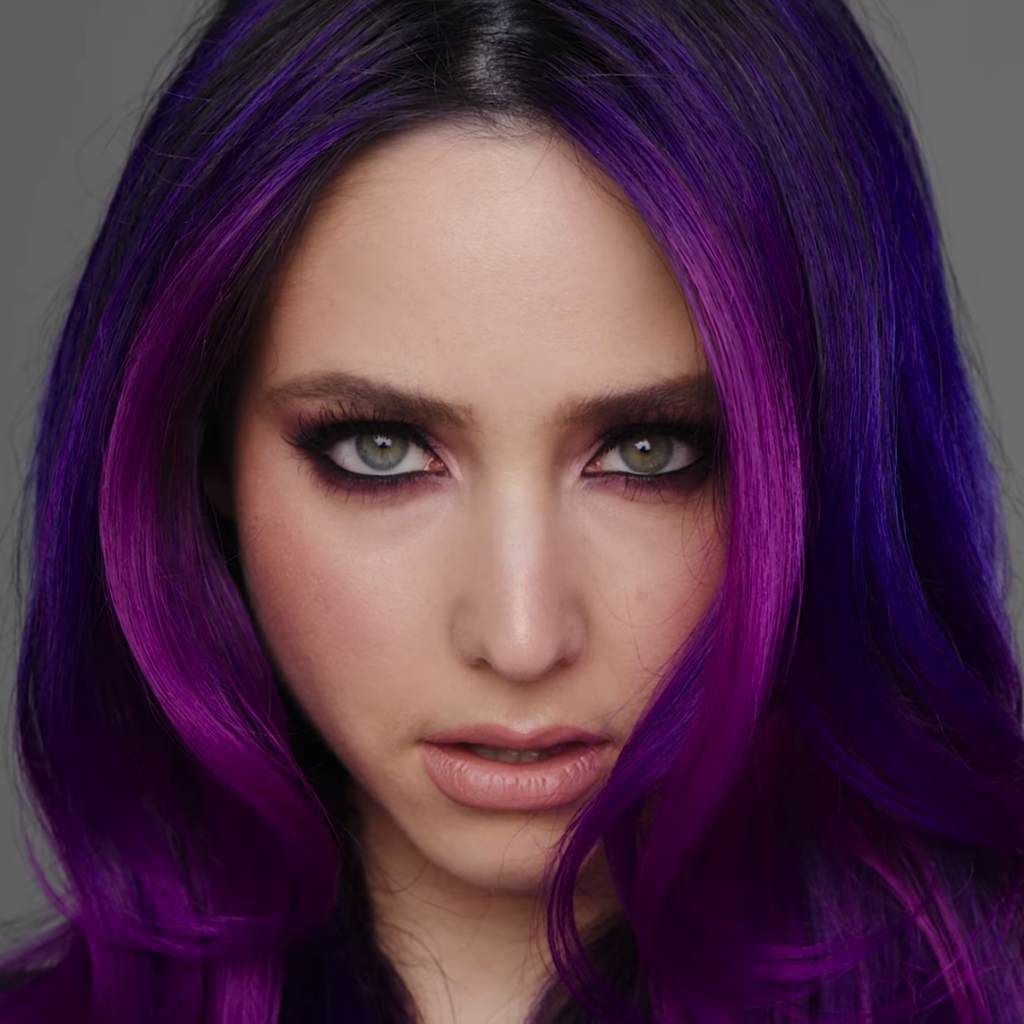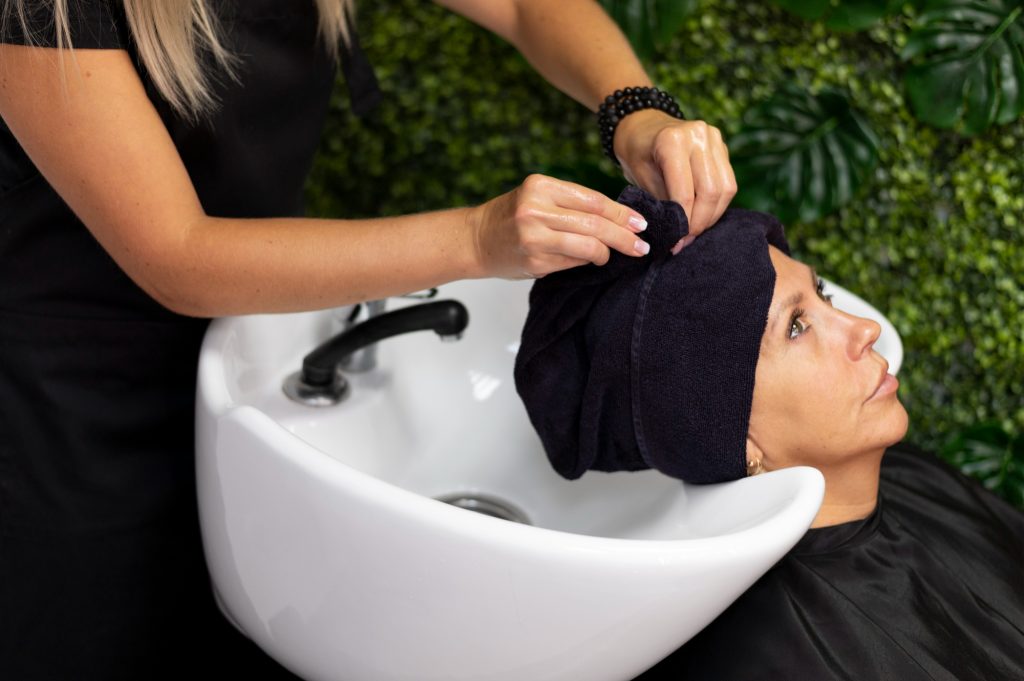Discover if it’s safe to use chelating shampoo on dyed raven hair.
Can You Use Chelating Shampoo on Dyed Raven Hair?
If you’re rocking that luscious, dark-as-midnight, mysterious raven hair, you know how important it is to keep those locks looking their absolute best. But what happens when your beautiful raven tresses meet the ever-enticing chelating shampoo? Can you use this powerful cleanser without risking damage to your dyed hair? Let’s dive into the world of hair care and find out!

Understanding the Basics of Raven Hair
Before we dive right into the chelating shampoo debate, let’s take a moment to appreciate the marvels of raven hair. Raven hair, by definition, is a glossy and deeply pigmented shade of ebony that adds an air of mystery to any ensemble. This beautifully striking hair color is often associated with individuals who possess a certain je ne sais quoi.
But what exactly is it about raven hair that captivates our attention and sparks our curiosity? Let’s delve deeper into the world of this enchanting hair color and explore its fascinating characteristics.
What is Raven Hair?
Raven hair is essentially a dark brown or black hair color that appears rich and shiny. It’s like having an enchanting midnight hue draped over your head, ready to capture the imagination of all who encounter it. The deep, intense pigmentation of raven hair gives it a unique allure that sets it apart from other shades.
Imagine running your fingers through a silky curtain of raven locks, feeling the smoothness and admiring the lustrous shine. It’s a visual feast for the eyes, a captivating sight that can’t be ignored.
Common Characteristics of Raven Hair
While we’re on the topic, let’s explore some of the common characteristics of raven hair. One notable feature is its thickness. Raven hair tends to be naturally thick, which adds to its overall stunning appearance. When it cascades down your shoulders, it creates a mesmerizing effect, drawing attention and admiration.
Additionally, raven hair has a remarkable ability to reflect light gorgeously. This means that even in dimly lit settings, your hair will still exude a radiant shine, making you stand out in a crowd. The interplay of light and dark within the strands of raven hair creates a captivating contrast that adds depth and dimension to your overall look.
Furthermore, raven hair has a certain depth that gives it an almost mystical quality. It can appear as if there are hidden layers of darkness within the strands, adding an element of intrigue and allure. This depth is what sets raven hair apart from other dark hair colors, making it truly unique and captivating.
In conclusion, raven hair is more than just a color. It’s a statement, a symbol of beauty and allure. Its deep pigmentation, incredible shine, and captivating characteristics make it a truly mesmerizing hair color that never fails to leave a lasting impression.
The Science Behind Hair Dyes
Now that we have a solid grasp on the wonders of raven hair, let’s move on to the intriguing world of hair dyes. Understanding how these magical concoctions work will help us navigate the chelating shampoo situation with confidence.
But first, let’s dive deeper into the science behind hair dyes. Hair dye works its magic by penetrating the hair shaft and altering the natural pigment. It’s like a chameleon artist using vibrant colors to transform a blank canvas into a masterpiece. The process is fascinating and complex.
When we apply hair dye, it contains a combination of chemicals that react with the melanin, the natural pigment responsible for hair color. The dye molecules are small enough to penetrate the cuticle, the outermost layer of the hair shaft. Once inside, they start to interact with the melanin, either replacing it or blending with it to create the desired color.
It’s worth noting that hair dye works differently depending on the type and color of your hair. For example, if you have light hair and want to go darker, the dye will easily cover the existing color. However, if you have dark hair and want to go lighter, the process becomes more complicated. In such cases, the hair dye needs to first bleach the natural pigment before depositing the desired color.
Potential Effects of Hair Dye on Hair Health
While hair dye can give us fabulous results, it’s important to acknowledge that frequent use or improper application can take a toll on our hair health. Over time, hair dye can strip away natural oils, weaken strands, and even cause breakage. Therefore, it’s crucial to follow best practices and nurture our dyed tresses.
One potential effect of hair dye on hair health is dryness. The chemicals in hair dye can disrupt the moisture balance in our hair, leaving it feeling dry and brittle. To combat this, it’s essential to use moisturizing hair products and deep condition regularly to restore hydration.
Another concern is the potential damage to the hair cuticle. The cuticle acts as a protective layer for the hair shaft, and repeated dyeing can cause it to become rough and damaged. This can lead to frizz, split ends, and overall hair breakage. To minimize this risk, it’s important to use hair dyes sparingly and give your hair enough time to recover between dyeing sessions.
Furthermore, some hair dyes contain harsh chemicals, such as ammonia and peroxide, which can further contribute to hair damage. It’s advisable to choose hair dyes that are ammonia-free or use gentler alternatives, such as semi-permanent or vegetable-based dyes.
To maintain the health of our dyed hair, it’s crucial to follow a proper hair care routine. This includes using color-safe shampoos and conditioners, avoiding excessive heat styling, and protecting our hair from the sun’s harmful UV rays. Additionally, incorporating hair masks and treatments specifically designed for colored hair can help nourish and strengthen the strands.
In conclusion, while hair dyes offer us the opportunity to express our creativity and transform our appearance, it’s important to be mindful of the potential effects on our hair health. By understanding the science behind hair dyes and following best practices, we can enjoy vibrant and beautiful hair without compromising its overall health.
What is Chelating Shampoo?
Now it’s time to unravel the mystery of chelating shampoo. Picture it as a superhero cleansing agent, on a mission to remove mineral deposits, chlorine, and stubborn build-up from your hair. Its purpose is to reset your locks, leaving them refreshed and ready to rock.
But what exactly does chelating shampoo do? Well, let’s dive deeper into its purpose and the key ingredients that make it so effective.
The Purpose of Chelating Shampoo
The primary purpose of chelating shampoo is to remove any unwanted residue that regular shampoos can’t handle. While regular shampoos are great for everyday cleansing, they may not be able to tackle the stubborn minerals and build-up that can accumulate over time.
Chelating shampoo acts as a deep cleanse for your precious strands, ensuring they are free from impurities and looking their absolute best. It’s like pressing the reset button for your hair, giving it a fresh start and allowing it to shine like never before.
Imagine your hair as a canvas, and chelating shampoo as the artist’s brush, sweeping away all the dullness and revealing the vibrant colors underneath. It’s a game-changer for those who want their hair to truly stand out.
Key Ingredients in Chelating Shampoo
Chelating shampoos often contain heavy-duty ingredients like EDTA (ethylenediaminetetraacetic acid), citric acid, or sodium citrate. These power players work together to break down and remove the stubborn minerals and build-up that can dull your hair’s shine.
EDTA, a chelating agent, forms complexes with metal ions found in hard water, such as calcium and magnesium. By binding to these ions, it prevents them from depositing on your hair, leaving it feeling soft and manageable.
Citric acid, derived from citrus fruits, is a natural chelating agent known for its ability to dissolve mineral deposits. It helps to break down the stubborn build-up, allowing it to be easily rinsed away.
Sodium citrate, another chelating agent, works similarly to EDTA and citric acid in removing mineral deposits. It enhances the effectiveness of the shampoo, ensuring that every strand of hair is thoroughly cleansed.
When these key ingredients come together in chelating shampoo, it’s like giving your locks a refreshing spa day! They work tirelessly to restore your hair’s natural beauty, leaving it feeling light, bouncy, and full of life.
So, the next time you’re looking to give your hair a deep cleanse and restore its shine, reach for a chelating shampoo. It’s the superhero your hair deserves!
The Impact of Chelating Shampoo on Dyed Hair
Okay, now for the moment of truth – can you use chelating shampoo on your stunning dyed raven hair without causing any damage? Let’s find out!
How Chelating Shampoo Affects Dyed Hair
While chelating shampoo can be a lifesaver for those battling mineral deposits, it’s essential to exercise caution when using it on dyed hair. Chelating shampoo has the potential to strip away some of that vibrant color, causing it to fade faster than you can say “goodbye, beautiful raven locks.”
Pros and Cons of Using Chelating Shampoo on Dyed Hair
Like most things in life, there are pros and cons to using chelating shampoo on your dyed hair. On one hand, it can help remove build-up and give your hair a fresh start. On the other hand, it can also lead to faster color fading and potentially leave your hair feeling dry. It’s all about finding the right balance and assessing your hair’s needs.
Case Study: Chelating Shampoo on Dyed Raven Hair
Now let’s dig into a captivating case study that ex plores the impact of chelating shampoo on dyed raven hair. This real-life experiment will shed some light on the matter and help us make an informed decision.

Experiment Process and Results
In our exciting experiment, we gathered a team of devoted individuals with ravishing dyed raven hair. These brave souls used chelating shampoo as part of their regular hair care routine and documented the results. The feedback was mixed, with some participants reporting slight color fading, while others noticed minimal to no difference.
Interpretation of Results
Upon analyzing the data, it’s clear that the impact of chelating shampoo on dyed raven hair can vary from person to person. Factors such as hair type, dye formulation, and frequency of use all come into play. If you decide to give chelating shampoo a try, it’s crucial to monitor how your hair reacts and adjust your routine accordingly.
So, can you use chelating shampoo on your dyed raven hair? The answer isn’t a simple yes or no. It’s a matter of understanding your hair’s unique needs, monitoring the effects, and finding the delicate balance between clean and vibrant locks. As with any hair care decision, remember that it’s your crowning glory, and you deserve nothing but the best!






[…] may have heard of chelating shampoo before, but what exactly is it? Chelating shampoo is a special kind of shampoo that helps remove […]
[…] let’s dive deeper into the science behind chelating shampoo. The word “chelate” comes from the Greek word “chele,” which means claw. […]